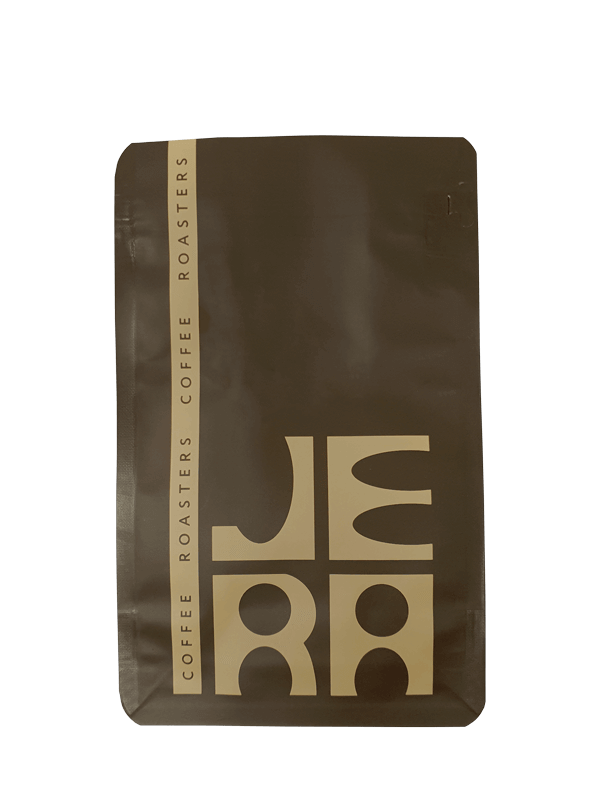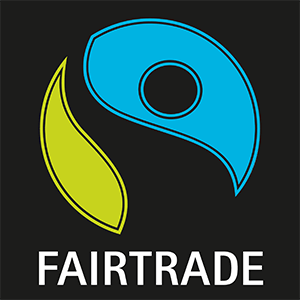קפה קלוי קולומביה | Huila, finca La Bonita
קפה קלומביאני מיוחד ביותר מזן ג'אווה ועיבוד יבש אנארובית
מצאתי מאחורי שקים אחרים עוד 4קג קפה ירוק המדהים הזה והחלטתי לקלות אותו בקלייה קצת יותר כהה, כך שיתאים גם לפילטר וגם לאספרסו. יצאה קפה מאוד מתוק, באספרסו עם חמיצות דיי בולטת עך לא אגרסיבית יותר מדי ובפילטר חמיצות מאוד מאוזנת. בגלל שזה קפה אחרון וניסיוני – גם הורדתי קצת את המחיר 🙂
גוף עדין ונקי, מרירות נמוכה, מתיקות גבוהה וחמיצות מאוזנת. קפה מדהים עם ארומה פרחונית וטעמים של מיץ דובדבנים, תותים ותבלינים מתוקים. מצוין להכנת כל סוגי קפה פילטר או אספרסו מרענן וחמצמץ
₪70.00 – ₪280.00
ברכישת כל סוגי קפה קלוי בסכום:
בין 600 ש"ח ל-1000 ש"ח עם קוד קופון "15%" תקבלו 15% הנחה
בין 1001 ש"ח ל-1500 ש"ח עם קוד קופון "25%" תקבלו 25% הנחה
מעל 1501 ש"ח עם קוד קופון "30%" תקבלו 30% הנחה
רוג'ליו וליידי ג'ואנה אספינוסה מגדלים את זני ג'אווה וגיישה בחוותם, פינקה לה בוניטה. מאז שרכשו את החווה, הם משקיעים בגידול ועיבוד קפה באיכות גבוהה, כולל עיבוד אנאירובי טבעי כמו זה. הם קראו לחווה "פינקה לה בוניטה", שפירושו בספרדית "היפה", על שם הנופים המרהיבים שנשקפים מהשטחים השטוחים והציוריים של החווה. רוג'ליו טוען שאין מקום יפה יותר לעבוד בו מאשר פינקה לה בוניטה.
קציר ועיבוד לאחר הקציר
קוטפים שכירים בוחרים ביד בקפידה את הדובדבנים האדומים והבשלים ומעבירים אותם לטחנת העיבוד הרטובה שבמקום. הקוטפים מעודדים לבחור רק דובדבנים בשלים, ובקבלת הדובדבנים מתבצע מיון נוסף קפדני כדי להבטיח שפחות מ-1% מהדובדבנים המעובדים אינם בשלים. לאחר הבחירה, הדובדבנים מוכנסים לשקיות פלסטיק אטומות ומותססים במשך 100 שעות. לאחר ההתססה, הדובדבנים נפרסים על מיטות מוגבהות לייבוש בשמש. הדובדבנים נגרפים לעיתים קרובות כדי להבטיח ייבוש אחיד. הייבוש נמשך כ-12 ימים.
קפה מקולומביה
קולומביה היא מדינה הררית, עם גבהים שמגיעים עד 2,200 מטר מעל פני הים. הקפה גדל במדרונות תלולים, ולכן יש לקטוף אותו כולו ביד. המדינה נמצאת ישירות על קו המשווה, ובשילוב עם טווח הגבהים הרחב שבה, ניתן לקצור קפה כמעט כל השנה. רוב הקפה הקולומביאני מגודל בחוות קטנות שבבעלות חקלאים עצמאיים — גודל ממוצע של חווה הוא רק 3 דונם. רבות מהחוות ממוקמות ביערות הרריים, שם הקפה גדל בצל עצים, והגישה אליהן יכולה להיות קשה מאוד. לעיתים קרובות אי אפשר להגיע אליהן ברכב, ולכן חקלאים רבים משתמשים בסוסים או חמורים — שיכולים לעבור במקומות שרכב אינו מסוגל.
האקלים הלח והטמפרטורות הנמוכות בגבהים הגבוהים גורמים לכך שעיבוד רטוב (washed) הוא השיטה הנפוצה ביותר לעיבוד קפה בקולומביה.
קולומביה היא יצרנית הקפה השלישית בגודלה בעולם. חוות הקפה במדינה ממוקמות באזורים הרריים, בטווח גבהים של בין 1,000 ל-2,300 מטר מעל פני הים. בזכות טווח הגבהים הרחב הזה, קולומביה מציעה מגוון רחב של פרופילים לקפה — מקפה קליל ופרחוני ועד קפה עשיר ושוקולדי.
תסיסה אנאירובית
תסיסה אנאירובית היא שיטת עיבוד שבה תהליך התסיסה מתבצע בתוך מיכלים אטומים ללא גישה לחמצן — כמו חביות פלסטיק, מיכלי נירוסטה או שקי GrainPro.
בתחילה, מכינים את הדובדבנים: מבצעים דה-פאלפינג כמו בעיבוד רטוב או Honey (לעיתים משאירים יותר מהציפה), או ששוטפים ומשאירים את הדובדבנים שלמים. במהלך התסיסה, שאריות הציפה והריריות סביב הפולים מתפרקות, ומשתחרר פחמן דו-חמצני (CO₂). בהשפעתו של ה-CO₂, תרכובות ארומטיות מהציפה ומהמיץ חודרות אל תוך הפולים.
בניגוד לתסיסה הקלאסית (שמתבצעת בהשריה במים) הנהוגה בעיבוד רטוב ונמשכת בדרך כלל בין 10 ל-20 שעות, תסיסה אנאירובית יכולה להימשך עד 120 שעות ולעיתים אף יותר. על המגדלים לעקוב בקפידה אחר זמן התסיסה, רמת החומציות (pH), הלחץ והטמפרטורה בתוך המיכלים כדי למנוע התפתחות של חומצות לא רצויות — כמו חומצה אצטית.
בגלל היעדר החמצן, מספר המיקרואורגניזמים שיכולים לשרוד ולהשתתף בתהליך התסיסה מוגבל. כתוצאה מכך מתקבל פרופיל טעם בולט ומובחן, שלרוב כולל תווים של פירות טרופיים, יוגורט ותבלינים.
פייר טרייד (Fair Trade)
מטרת הסמכה זו היא לתמוך בתנאי עבודה ושכר הוגנים בחוות במדינות מתפתחות. באופן מסוים, היא מקדמת סחר הוגן, ולא מתייחסת רק לקפה אלא גם למוצרים נוספים. ההסמכה פופולרית במיוחד בקרב צרכנים במדינות מפותחות שבהן קיימת מודעות גבוהה יותר לצריכה מוסרית – בעיקר בארצות הברית ובצפון אירופה.
הסמכת Fair Trade מבטיחה שלא נעשה שימוש בעבודת ילדים בחוות, שעובדים מקבלים שכר הוגן, ושמתקיימים תקני בריאות ובטיחות בעבודה. הארגון מבצע בדיקות שוטפות בחוות המאושרות כדי לוודא שהן עומדות בדרישות
Rogelio and Leidy Johanna Espinosa grow the Java and Geisha coffee varieties at their farm, Finca La Bonita. Since acquiring the land, they have dedicated themselves to producing exceptional coffees, including Anaerobic Naturals like the one featured here. The name “La Bonita,” which means “the pretty one” in Spanish, was inspired by the farm’s stunning scenery — flat lands with breathtaking views. According to Rogelio, there is no better place to work than Finca La Bonita.
Harvesting and Processing
Skilled seasonal pickers are hired to hand-select only fully ripe, red coffee cherries, which are then brought to the farm’s wet mill. The pickers are trained to focus solely on harvesting ripe cherries, and upon arrival, the harvest is carefully sorted once again, ensuring that less than 1% of the cherries moving on to processing are underripe.
After sorting, the cherries are placed into airtight plastic bags for anaerobic fermentation, which lasts for 100 hours. Once fermentation is complete, the cherries are transferred to raised drying beds where they are exposed to the sun. Throughout the drying period — which takes around 12 days — the cherries are regularly turned to guarantee even drying.
Coffee from Columbia
Colombia is a mountainous country, with elevations reaching up to 2,200 meters. Coffee grows on steep hillsides, so it must be harvested entirely by hand. The country lies directly on the equator, and combined with its broad altitude range, this allows for nearly year-round harvesting. Most Colombian coffee is grown on small farms owned by independent farmers — the average farm size is only 3 hectares. Many of them are located in mountain forests, where coffee grows in the shade of trees, and accessing these farms can be extremely difficult. Often, it's impossible to reach them by car, so horses or donkeys are commonly used by farmers — they can pass where vehicles cannot.
The country’s humid climate and low temperatures at high altitudes make washed processing the most common method for Colombian coffee.
Colombia is the third largest coffee producer in the world.
Coffee farms in the country are located in mountainous regions, ranging from 1,000 to 2,300 meters above sea level. Due to this wide altitude range, Colombia offers a great diversity of coffee profiles—from light and floral to rich and chocolatey.
Anaerobic fermentation
Anaerobic fermentation is a processing method when coffee undergoes fermentation in sealed, oxygen-free containers — such as plastic barrels, stainless steel tanks, or special bags.
The coffee cherries are first prepared: either depulped (as in washed or honey processes, often leaving more mucilage) or washed and kept whole. During fermentation, the remaining mucilage and pulp around the beans break down, releasing carbon dioxide. Under the influence of CO₂, aromatic compounds from the pulp and juice penetrate into the beans.
Unlike traditional fermentation (which involves soaking in water) used in the washed process and typically lasts 10 to 20 hours, anaerobic fermentation can last up to 120 hours or even longer. Producers must carefully monitor fermentation time, pH levels, pressure, and temperature inside the containers to prevent the development of undesirable acids, such as acetic acid.
Due to the lack of oxygen, the number of microorganisms capable of surviving and participating in the fermentation is limited. As a result, the coffee develops a distinctive flavor profile, often featuring notes of tropical fruit, yogurt, and spices.
Fair Trade
The goal of this certification is to support fair working conditions and wages on farms in developing countries. In a way, it advocates for fair trade and applies not only to coffee but also to other products. It is especially popular among consumers in developed countries with more conscious consumption habits — mainly in the U.S. and Northern Europe.
Fair Trade certification means that no child labor is used on the plantation, and workers receive fair wages while health and safety standards are maintained. The organization regularly inspects the conditions on certified farms to ensure compliance.











